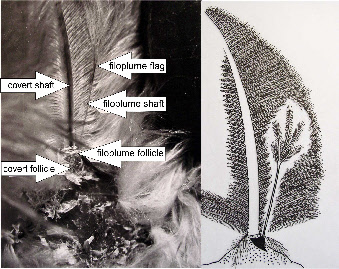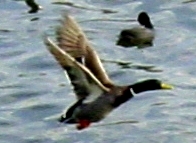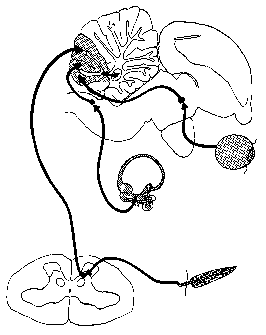


Disorders of the plumage influence aerodynamic properties of the body during flight. Feathers
are equipped with a variety of sensors which are able to detect both position and
movements. There are hair-

Flight-
Literature:
Necker, R.: Receptors in the skin of the wing of pigeons and their possible role
in bird flight. In: W. Nachtigall (ed.) Biona-
Necker, R.: Observations on the function of a slowly adapting mechanoreceptor associated
with filoplumes in the feathered skin of pigeons. J. Comp. Physiol. A 156, 391-
Necker, R.: The somatosensory system. In: Sturkies Avian Physiology (ed. CG Whittow).
Academic Press, New York, 2000, pp 57-


Sensory „hairs“ in the plumage control aerodynamic properties of flight
Filoplumes act as air-







